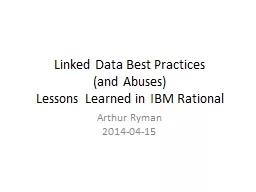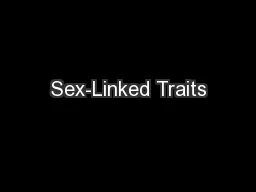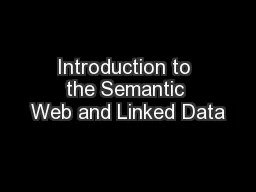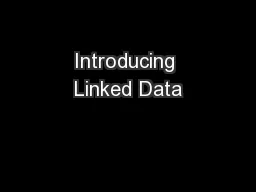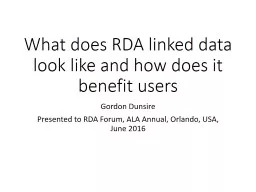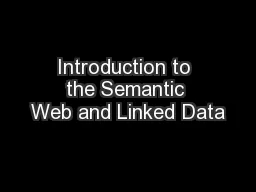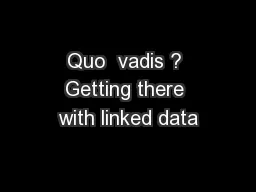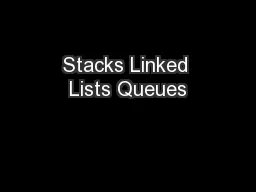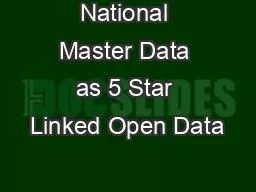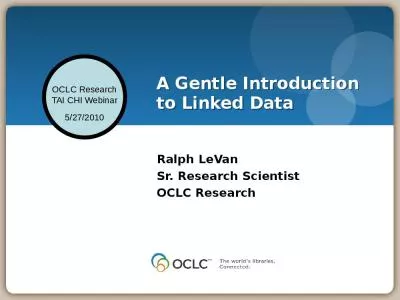PPT-Linked Data Best Practices
Author : tatyana-admore | Published Date : 2018-09-23
and Abuses Lessons Learned in IBM Rational Arthur Ryman 20140415 Best Practices Publishing vocabularies Data model customization Realworld things JSON and RDF Multivalued
Presentation Embed Code
Download Presentation
Download Presentation The PPT/PDF document "Linked Data Best Practices" is the property of its rightful owner. Permission is granted to download and print the materials on this website for personal, non-commercial use only, and to display it on your personal computer provided you do not modify the materials and that you retain all copyright notices contained in the materials. By downloading content from our website, you accept the terms of this agreement.
Linked Data Best Practices: Transcript
Download Rules Of Document
"Linked Data Best Practices"The content belongs to its owner. You may download and print it for personal use, without modification, and keep all copyright notices. By downloading, you agree to these terms.
Related Documents

